Few birds enjoy the reputation and prestige attributed to swans. Swans have inspired art from ballets (eg Tchaikovsky’s Swan Lake) to fairy tales (eg The Ugly Duckling by Hans Christian Andersen). They are a luxury status symbol often associated with royalty. Swans exemplify beauty and grace. I recently had the opportunity to observe these regal birds at the Swan Lake Iris Gardens in Sumter, South Carolina.
As the name suggests, the gardens showcase both swans and irises. The gardens are “home to all eight known species of Swan (Cygnus) and some of the most intensive plantings of Japanese Iris (Iris ensata) in the United States.” At the heart of the 150-acre garden is a large cypress swamp complete with buttressed bald cypress trees and mysterious, murky water.
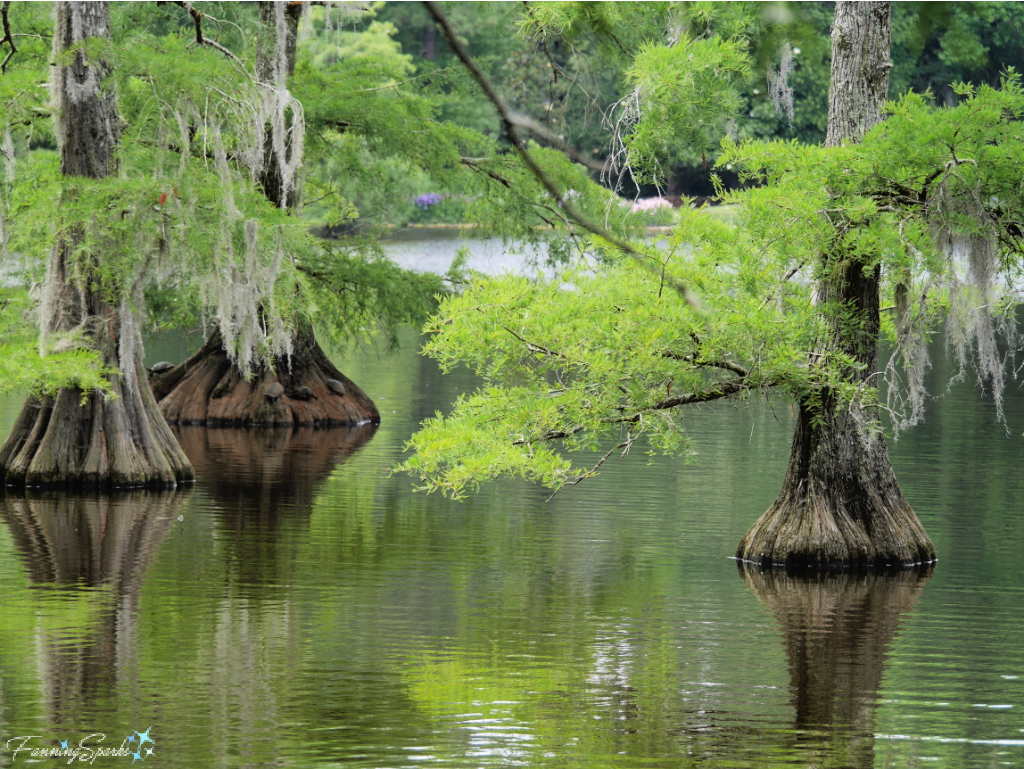
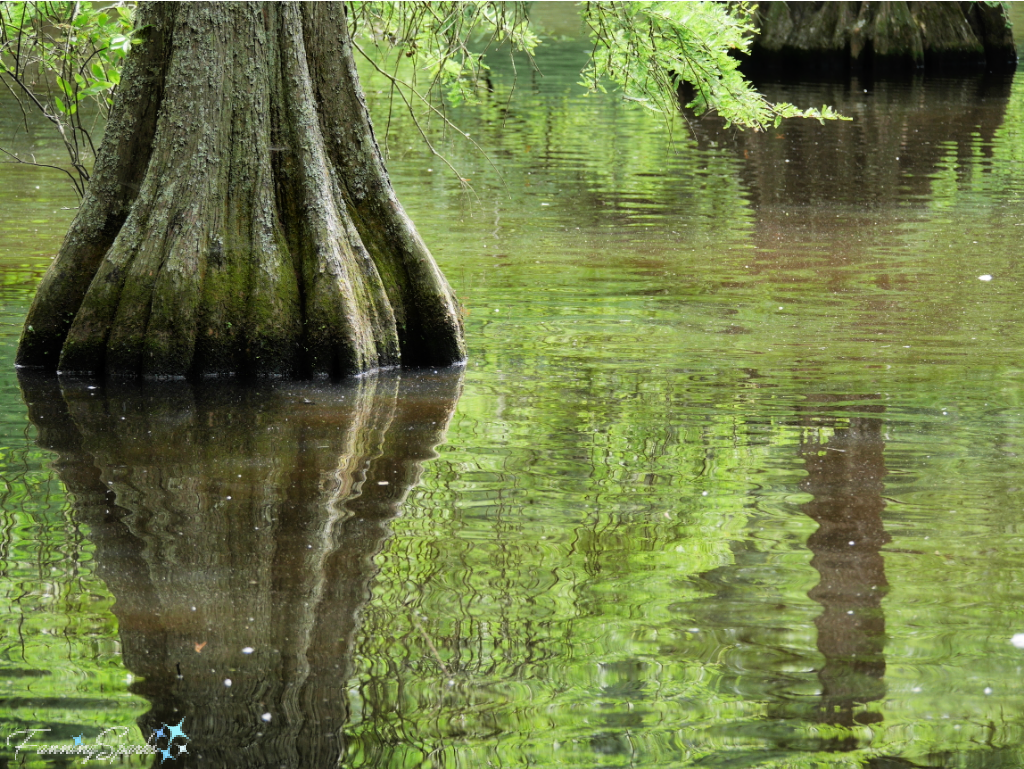
Japanese Irises thrive in this environment. They were in full bloom when I visited and the flowers were spectacular.
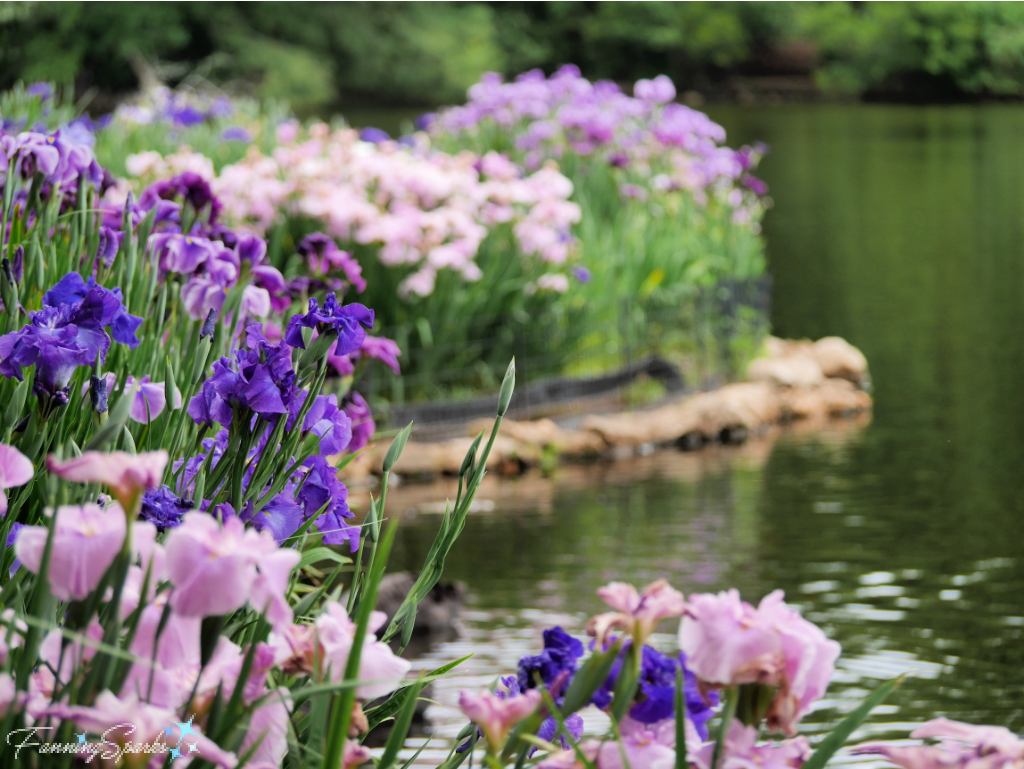

The irises were particularly lovely along this lakefront path…
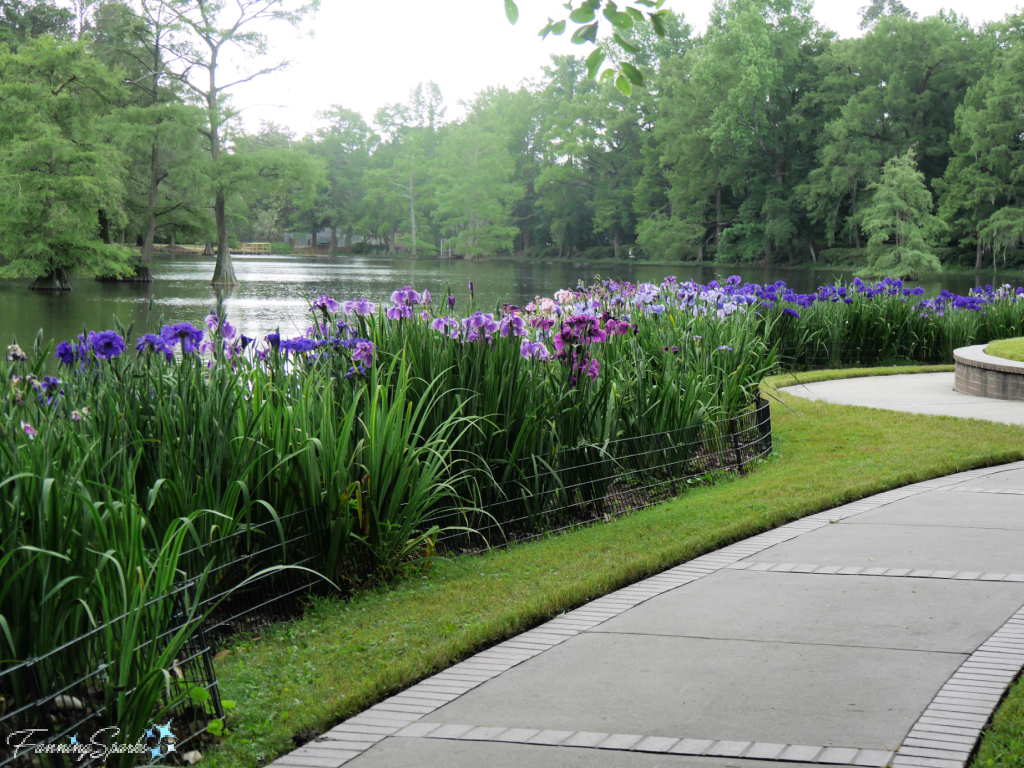
…which leads to the garden’s showcase sculpture, Recovery, by Grainger McKoy.

According to the plaque: “This sculpture represents the right wing of a pintail duck in its recovery stroke. This theme evolved from a wing position that is considered the weakest in bird flight. Yet in the artist’s eye is the position with the most beauty and grace. All of us are in recovery somewhere in our lives, as is our environment, of which Swan Lake is a unique part.”
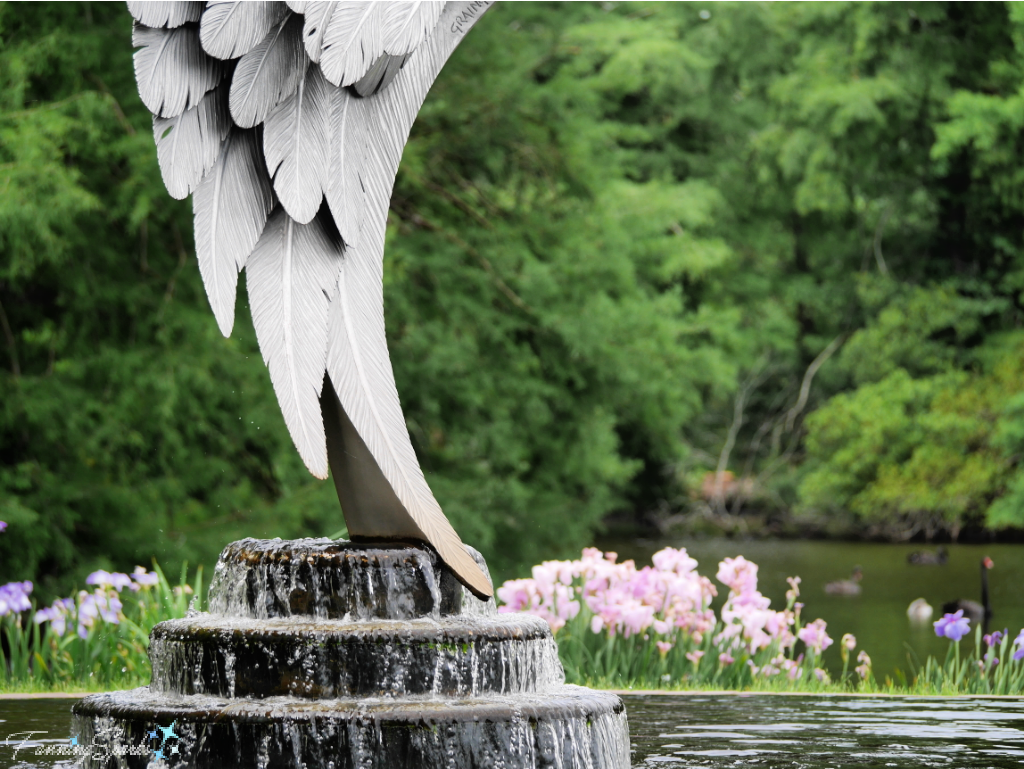
As if the setting, flowers and sculpture weren’t enough, the gardens also host an assortment of waterfowl. There are geese, ducks and, of course, swans! The various swan species can be viewed from a ¾-mile walking path around Swan Lake. Signs warn visitors to observe without disturbing.
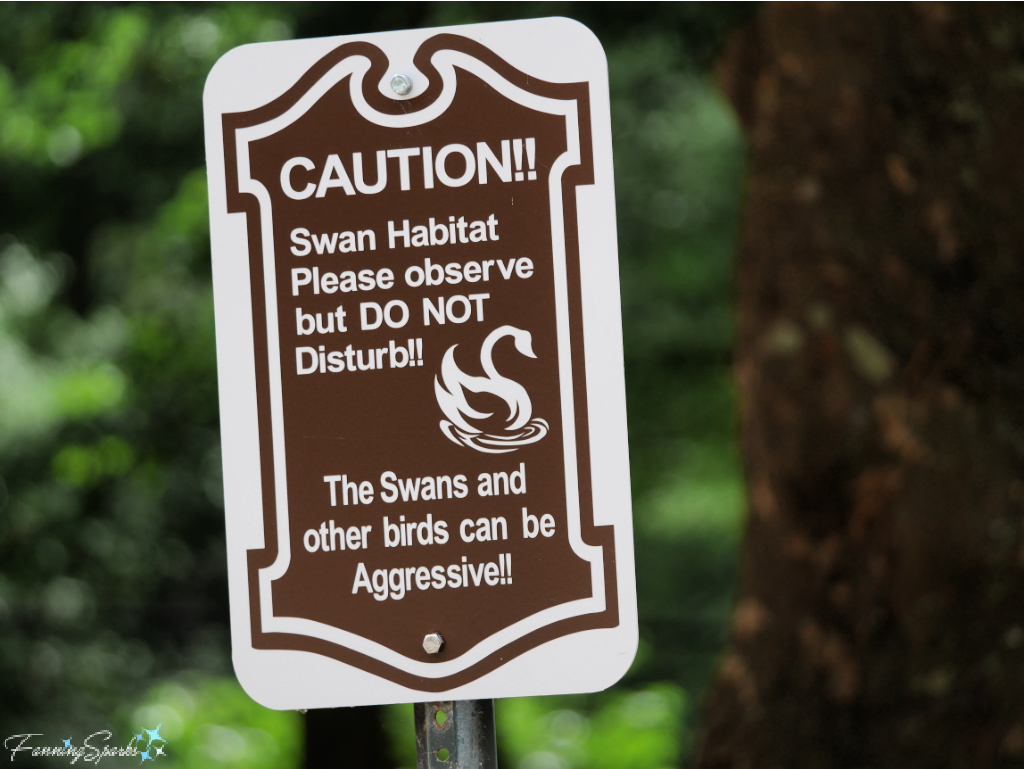
It’s the perfect stage for these beautiful birds. Shown below is a Trumpeter Swan (Cygnus buccinators) gracefully gliding over the dark, murky waters of the cypress swamp.
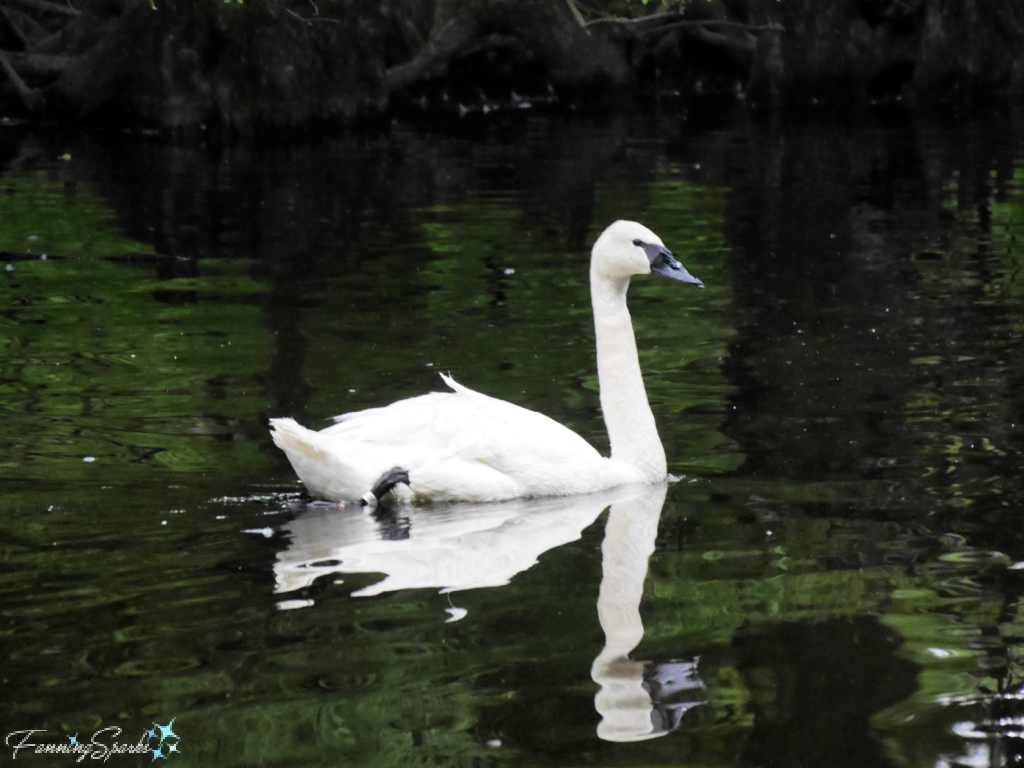
Trumpeter Swans are known for their haunting, deep-voiced, trumpet-like calls. They are reported to be the loudest of all swimming birds.
Shockingly, Trumpeter Swans were at risk of extinction not that long ago. Around 1933, fewer than 70 wild Trumpeter Swans were known to exist. They had almost died out from over-hunting for their down, skin and eggs. Luckily, aerial surveys discovered a population of several thousand in Alaska. Through strict protections and careful reintroductions from conservation organizations like the Trumpeter Swan Society, wild Trumpeter Swans were gradually restored in North America. In 2010, the population was over 46,000. It’s heartening to know this kind of turnaround is possible.
Another swan species, the Black Swan (Cygnus atratus) originally from Australia, were quite visible at the gardens. The photos below show a Black Swan with its adorable cygnet.

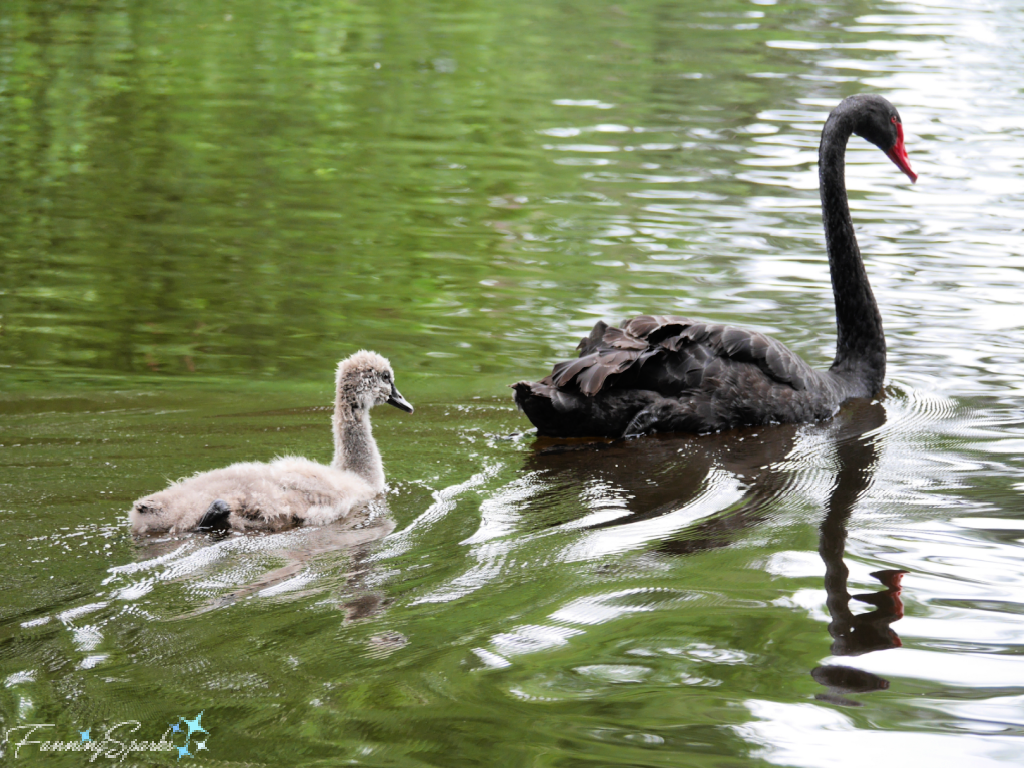
Interestingly, before 1697, Europeans were so convinced all swans were white that they used the expression “black swan” to describe something that was impossible. After the first Europeans witnessed the black swans of Australia, the expression morphed to represent the fragility of any system of thought. Nowadays, the term “Black Swans”, as defined by author Nassim Nicholas Taleb, has evolved to represent events which are rare, have extreme impact, and have retrospective predictability.
Here’s a pair of Black Swans sharing a feed of aquatic plants.
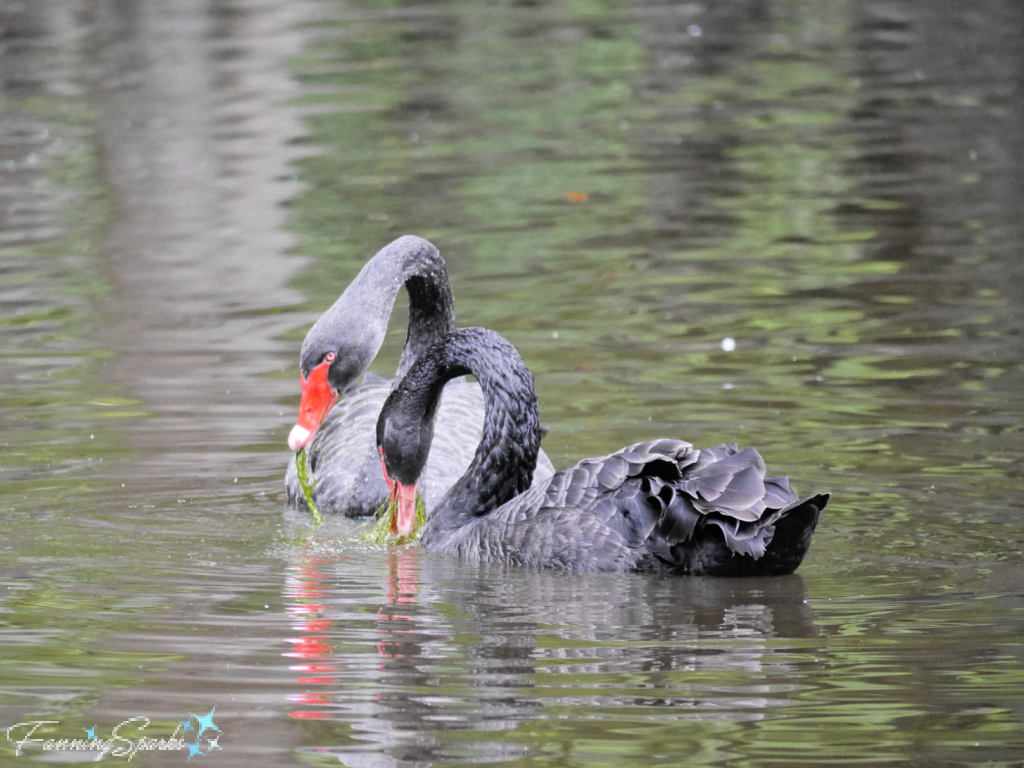
Similarly, a pair of Whooper Swans (Cygnus Cygnus) is eating vegetation from the water’s surface.
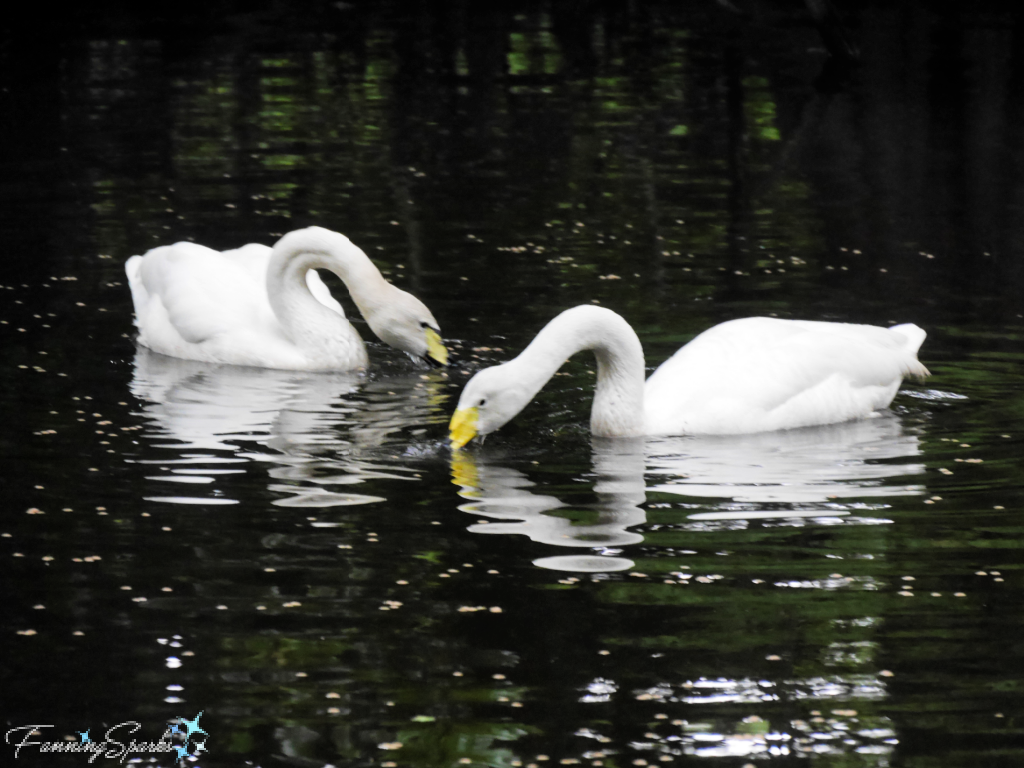
Swan Lake Iris Gardens is, of course, a managed habitat so the swans aren’t solely dependent on natural vegetation. This “floating food dish” was a popular spot.

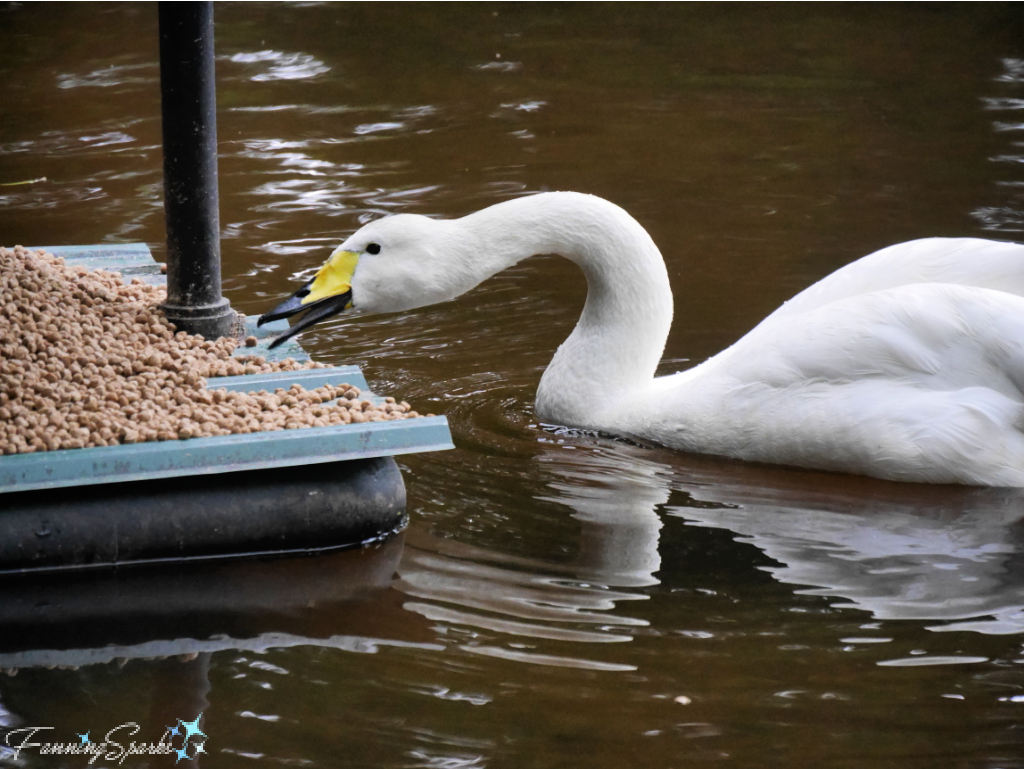
I learned from the book Swans and Other Swimming Birds that “Swans spend a lot of time preening. When swans preen, they use their bills to straighten and rearrange their feathers. They use their bills to remove any insects from their feathers. And they use their bills to waterproof their feathers. How do swans waterproof their feathers? A swan has a gland at the base of its tail that makes oil. The swan uses its bill to spread this oil over its feathers. The oil waterproofs the feathers.” I’m guessing that’s why this immature Mute Swan (Cygnus olor) was doing these amazing gymnastics.
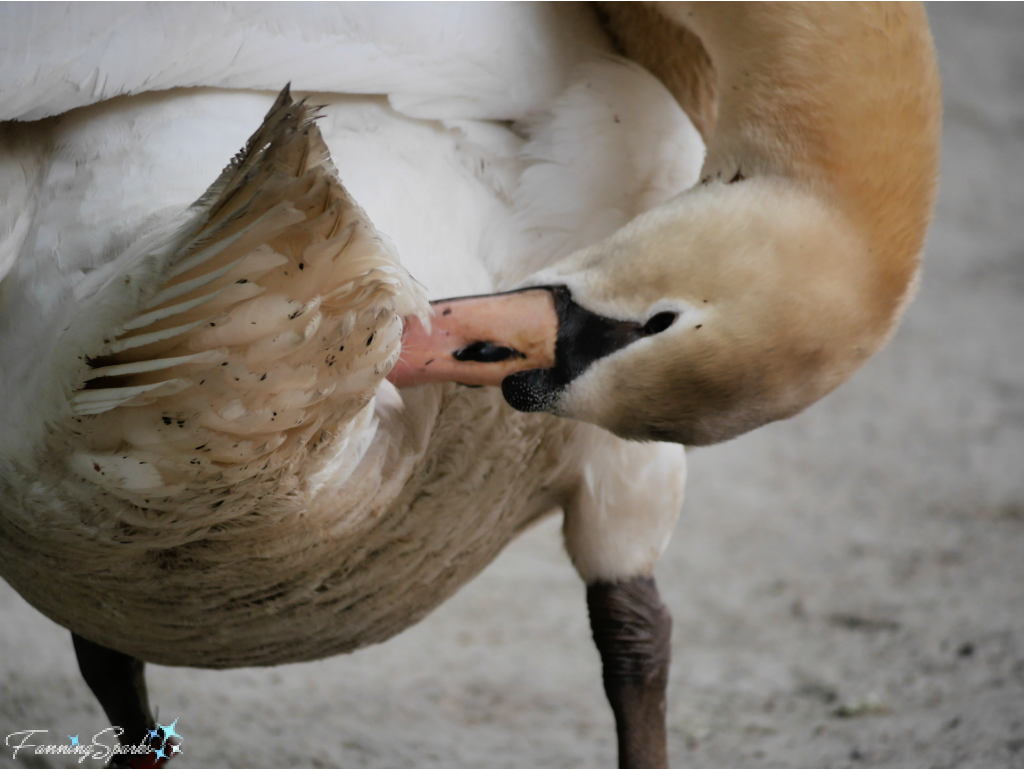
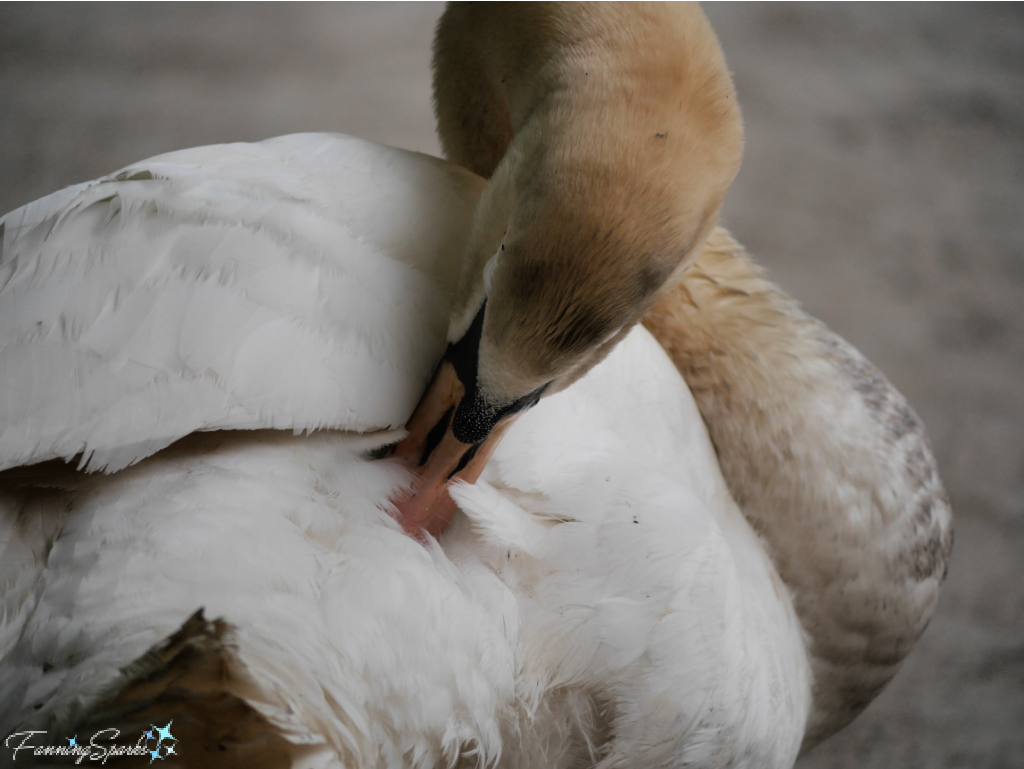
The Mute Swan, by the way, is probably the most recognizable swan species. Sometimes called the “ornamental park variety”, its knobbed orange bill is quite distinctive.
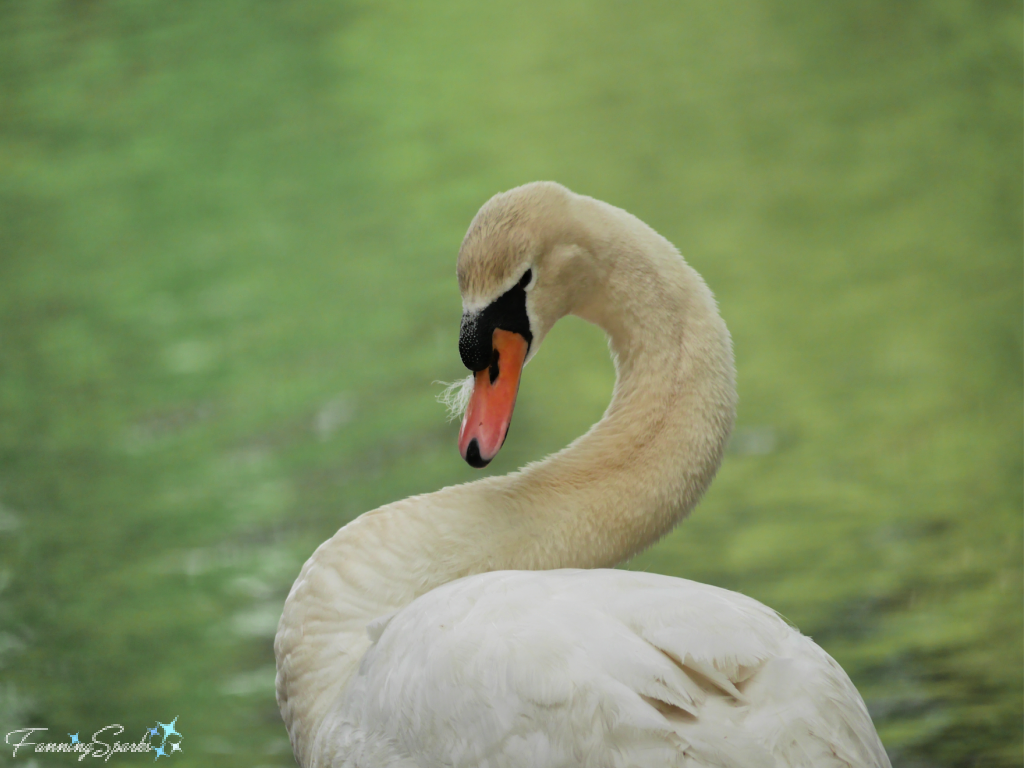
The Mute Swan is also known for its graceful pose while swimming. The exaggerated S-curve neck and the arch of the wings are unique to the Mute Swan.
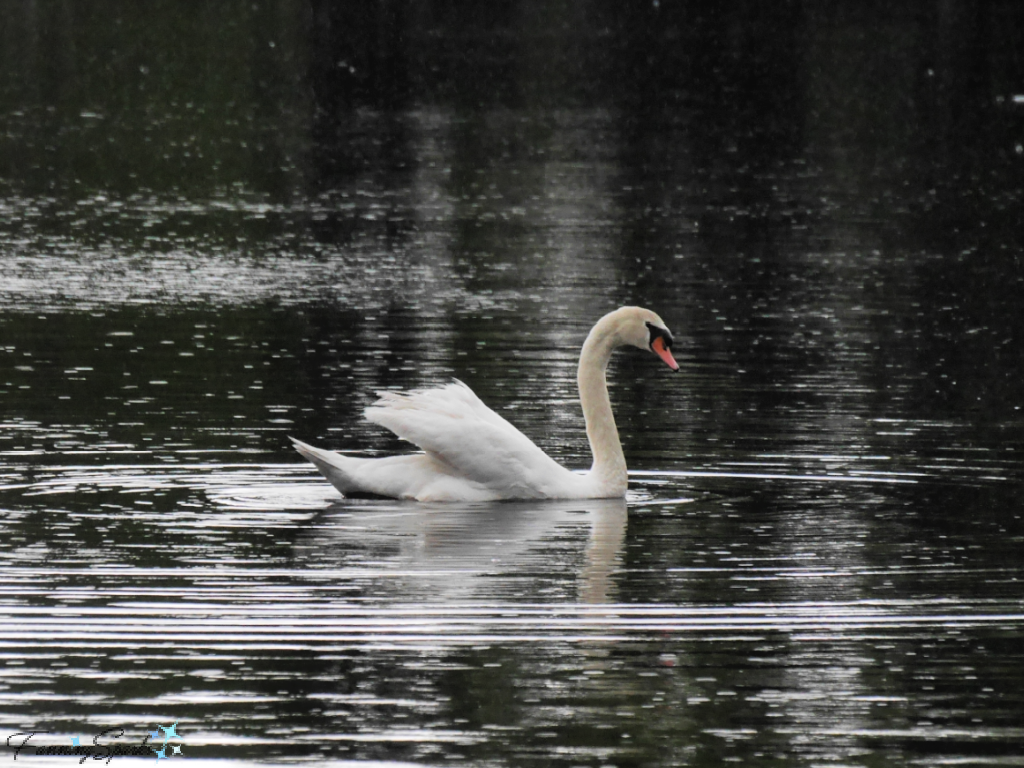
There’s an interesting story concerning Mute Swans and royalty. Many people believe all Mute Swans in the UK are owned by the Crown but, according to a 2017 Smithsonian Magazine article, that’s only part of the story. The article explains: “To protect swans as an exclusive commodity, in 1482 the crown ordained that only landowners of a certain income could keep the birds. Ownership of swans was recorded by a code of marks nicked into the beak of the bird… Only those who owned the right to use an official swan mark could own swans, and marks were restricted and expensive to purchase. Any swans that didn’t bear a mark were automatically the property of the crown. This effectively meant that only the monarch, wealthy landowners and some large institutions like trade guilds, cathedrals and universities could afford swan ownership.” The article goes on to describe the annual tradition, known as “Swam Upping”, whereby the Queen’s Swan Warden, counts all the Mute Swans on a 79-mile stretch of the River Thames.
The British monarchy is not the only one to treat swans as a luxury status symbol. Swans and swan motifs are often evident in the historic homes and palaces of royalty and wealthy individuals. One such example can be seen at the National Palace, in Sintra Portugal, which was home to the Portuguese royal family until the end of that monarchy. The ornate ceiling of the Sala dos Cisnes (Swan Hall), thought to originate from the 14th century, is covered in elaborate paintings of swans. At one time, this grand room was used for banquets, musical soirees, public receptions and religious festivities.
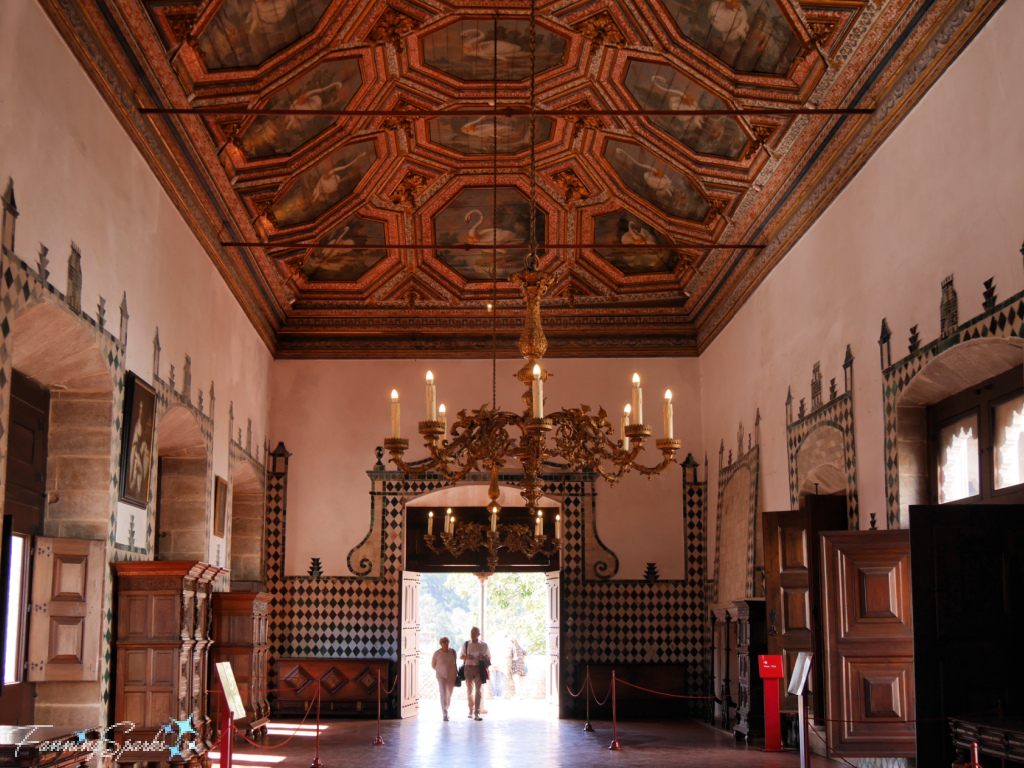
Here’s a closer look at one of the painted swan ceiling panels.
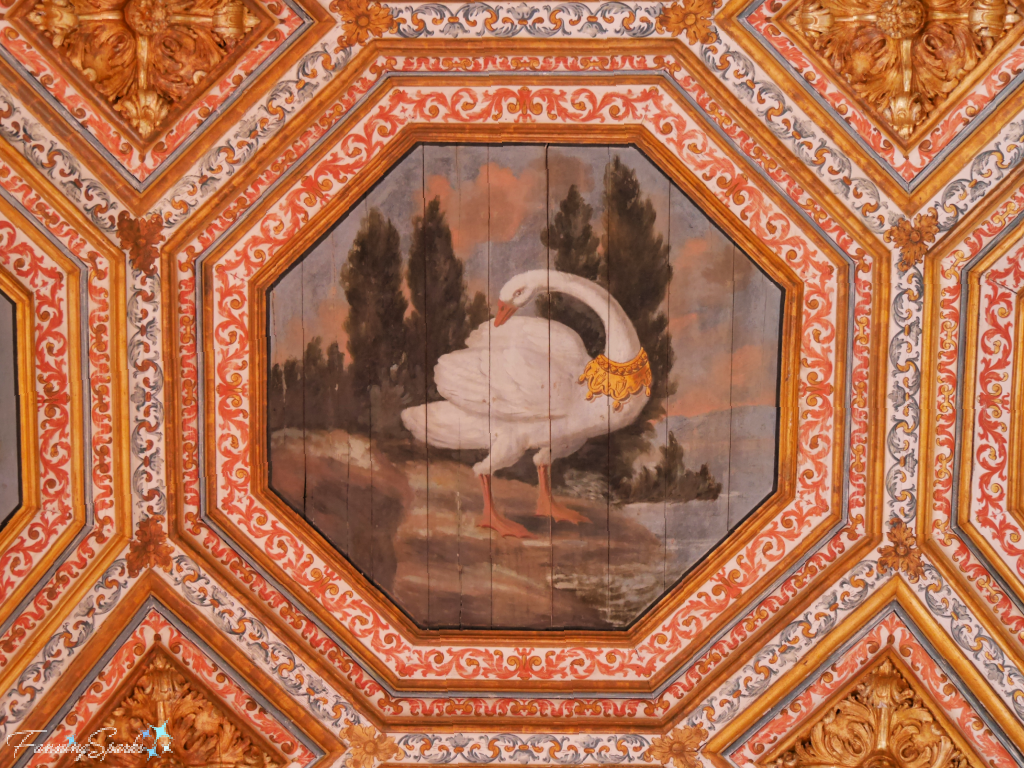
Swans, it turns out, are not only beautiful but also the subject of many interesting stories!
More Info
UPDATE June 21, 2021: Check out my new Pinterest board—Swans – FanningSparks Favs—which is dedicated to swans and packed with inspiring ideas to incorporate these regal birds into your next creative project.
The Swan Lake Iris Gardens are located in Lake Sumter, South Carolina, USA. You can learn more about the gardens on the City of Sumter South Carolina website.
The Trumpeter Swan Society is a North American, conservation organization dedicated to assuring the vitality and welfare of wild Trumpeter Swans.
You can learn more about the Black Swan Theory on Wikipedia.
The book Swans and Other Swimming Birds is available on Archive.org.
The 2017 Smithsonian Magazine article, The Fascinating, Regal History Behind Britain’s Swans, explains the aristocratic bird’s legacy as a luxury status symbol.
The National Palace, also known as the Palácio da Vila (The Town Palace), is located in Sintra, Portugal. You can learn more on the Sintra Portugal Tourism website.
Today’s Takeaways
1. Swan Lake Iris Gardens are a beautiful destination in South Carolina, USA.
2. Concerted efforts to conserve and protect wildlife can be very successful.
3. The stories surrounding a particular bird can be as surprising and entertaining as the bird itself.





Comments are closed.